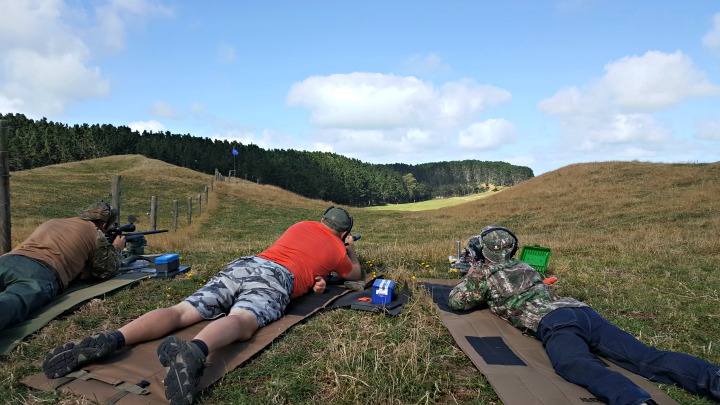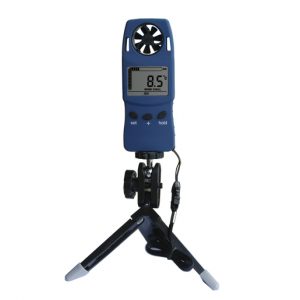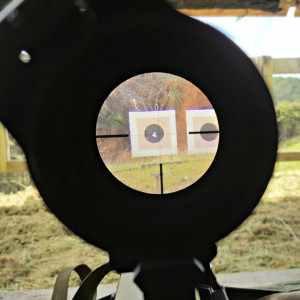Realistically, you don’t need any tools to read the wind except for knowledge and experience. Well, lots of knowledge and experience. In fact, the amount of money you spend on ammo and barrels learning to read wind, could easily cover the cost of some wind reading equipment. But which is the better way? Should you learn the hard way? Or spend the cash? Here are the options…
Kestrel with integrated ballistics info
This is the ultimate in wind-reading equipment complete with on-board ballistic solutions, tailored to your rifle and ammo combination. The list of features is almost endless, but here are some of the greatest hits:
- Bluetooth connection to your smartphone
- Bluetooth compatibility with Bushnell CONX Range Finder
- Nightvision backlight option to preserve your sight in failing light
- Bright green backlight for high visibility during the day
- Built in Applied Ballistics software, including the ‘Litz library’ of G1 and G7 BCs, custom drage curve modelling, ballistic calibration feature, and more
- Can be equipped with wind vane and tripod for hands-free wind direction and speed readings
I didn’t even mention the capability to accurately read wind and environmental factors – because that’s a given with the Kestrel product. This is, by far, the most advanced piece of kit you can get your hands on for reading wind and applying a ballistic solution in the field.
If you’re interested in one, check out The Gearlocker for more info.

Is a Kestrel 5700 for me?
So, who would this solution suit? Below are some of the types of shooters who might choose this option.
- I am a long range alpine hunter. That Tahr 700 m away? That’s dinner
- I’m an F-Class or benchrest competitor, looking to get more X’s than King Henry VIII
- I believe in “buy once, cry once” – I’ve heard it’s the best, so I’m not going to bother wasting my cash on cheaper solutions that will probably crap out on me
- I shoot once or twice a year, but when I do, I carry a $15,000 rifle and enough equipment to outfit a small revolution
- I place no financial limit on my ability to ethically harvest game at distances that are challenging, but realistic for my abilities

Anemometer and external ballistics info
What is an anemometer? Well, it’s an instrument that measures wind. But, wait? Didn’t we just cover that? No, no we did not. We just talked about the top end of the market. Anemometers cover a spectrum of uses, and if you just want something to “get the job done”, there could be a more accessible option for you.
Most marine stores, or even specialist electronic stores, should stock anemometers, and they will range from $100 – $150 for a basic unit, which may include a tripod, to a few hundred bucks, or even thousands of dollars, for ones with more bells and whistles.
These are not shooting/ballistic specific, and really are only good for reading wind and environmental factors. You’ll have a much more affordable option, but you’ll also need a separate ballistic app or printed out table, so you can mentally convert wind readings into meaningful shooting solutions. If you can’t trust your maths skills under pressure, this may not be the option for you.
Is a non-shooting anemometer for me?
If you think you’re one of the below types of shooters, then this could be the solution for you.
- I don’t have confidence or experience reading the wind, but my maths skills and elevation dope are on point
- I want to have a wind meter to fit in with the PRS crowd, but I’d rather spend money on ammo
- I’m a fan of the Budget Gun Nut. I once bought a rifle for $700 and spent $800 over 2 years, trying to get it to outshoot a $1300 gun.
- I want to get into long range shooting, but all of my shooting disciplines kill my discretionary funds. This is a cheaper way for me to make a start, and I can upgarde later
Training and external ballistics info
Now this is one that won’t cost you anything but time. And ammo actually, lots and lots of ammo. There are a few easy formulas/tables out there that can help you interpret what the wind is doing, and make some reasonably accurate wind calls using nothing but the environment around you, or a flag, or even a ribbon attached to the front of your rifle.

Below are some links to websites/blogs that give you some pretty good indications on how to read wind values from your environment.
http://www.millettsights.com/resources/shooting-tips/shooting-in-the-wind/
http://www.6mmbr.com/windreading.html
http://www.rifleshootermag.com/shooting-tips/shooting_tips_determing_wind_values/

If you want to really learn this stuff, you’re going to not only need to do the research, but you’ll have to spend time out in the field, listening to more experienced shooters, and sending ammo downrange to judge the accuracy of your calls. You’ll still need ballistics tables, as all your rifle/chambering/ammo combinations will net different results in terms of “bucking the wind”.
It will also pay to make sure you stick to one system. If you like MIL instead of MOA, use that across all of your rifles, if possible. Make sure your turrets match your reticle. Learn your drops and holds in your chosen measurement. By making some systems uniform across various platforms, you are removing some of the mental gymnastics you’ll have to do when making a wind call.
Should I train my brain, instead of spend $$ on a wind meter?
Having a base knowledge of wind and its effects is probably something we all need, but a select few individuals will go their entire lives relying on nothing more than the feel of a cool breeze on their cheeks, or the movement of leaves and branches overhead, to determine the wind corrections they need to make to pull off that shot. So, are you one of the shooters below?
- I carry paracord, a knife, flint and a torch. Everywhere I go, all the time. I am prepared for any outcome, and relying on battery powered wind meters is not in my game plan
- I learned to shoot from my grandfather, and I still hunt with his SMLE No 1 Mk III. Old school is fine by me
- I am genuinely interested in developing my all round knowledge of hunting and shooting, even if there are applied ballistics calculators that could do it in seconds
- I think a Kestrel would be great, but I hunt under 300 metres and I only really need a good indication of wind – it doesn’t need to be perfect





